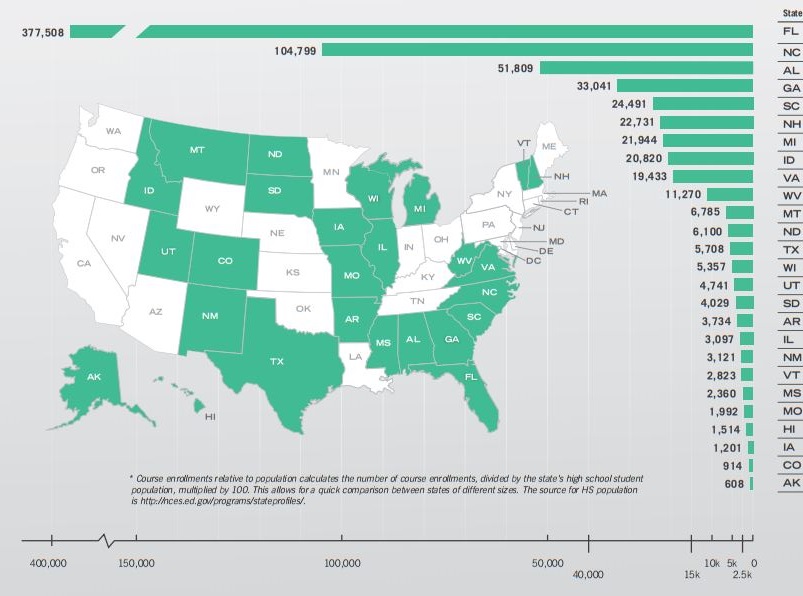Buzz about the potential of digital learning abounds. Despite the excitement, relatively little is known about how many students are actually taking advantage of digital learning opportunities. This is partly due to online learning tools having numerous forms, rendering them difficult to track. In addition, policies also vary greatly across states. A new report, Keeping Pace with K-12 Digital Learning, helps to shed light on the state of online learning in the United States.
Digital Schools are Growing
Thirty states offer fully online schools that grant degrees. There are approximately 315,000 students enrolled in this type of digital school. This represents about half of one percent of the overall primary and secondary school population. But, the number of students enrolled in online schools is growing rapidly. This past school year enrollment increased by 6.2 percent. In addition, virtual schools, which provide supplementary course offerings, have about 740,000 course enrollments in the 2013-2014 school year.
State Virtual School: Course Enrollment
Click to enlarge. Source: Evergreen Education Group
Few Major Policy Changes in 2014
Although digital schools have many more students and course enrollments, states did not make many major policy changes to promote continued growth. According to the report, “few states passed laws that signal a significant change in direction and will have a substantial impact on digital learning.” There were some unheralded policy changes that could potentially strengthen digital learning. Ohio and California created a dedicated funding stream for digital learning. North Carolina created the position of “chief academic and digital learning officer” to administer the state’s online learning programs.
Policy Remains a Major Constraint on Digital Education
Many states maintain policies that inhibit the growth of digital learning. Currently, twenty states have laws banning the enrollment of students in digital schools. If these laws remain unchanged, the growth of online learning will be severely limited. Seat-time requirements are also a major barrier. These laws mandate that students must spend a certain number of hours in a brick-and-mortar school to graduate regardless of their grades or performance on exams.
Digital learning has two chief benefits. First, virtual schools are typically less costly to implement on a per-pupil basis. Second, digital schools also expand the number of course choices for students. Some states have used virtual schools to make Advanced Placement classes available to highly motivated students who could otherwise not enroll in those classes. There is also new evidence from an evaluation of the Florida Virtual School that digital courses are not inherently worse than traditional schools. Given this promising new research and the economic benefits outlined, all states should seek to make it easier for students to enroll in advanced courses online.



Commentary
How Big is Digital Education in the United States? An End of Year Review
December 15, 2014